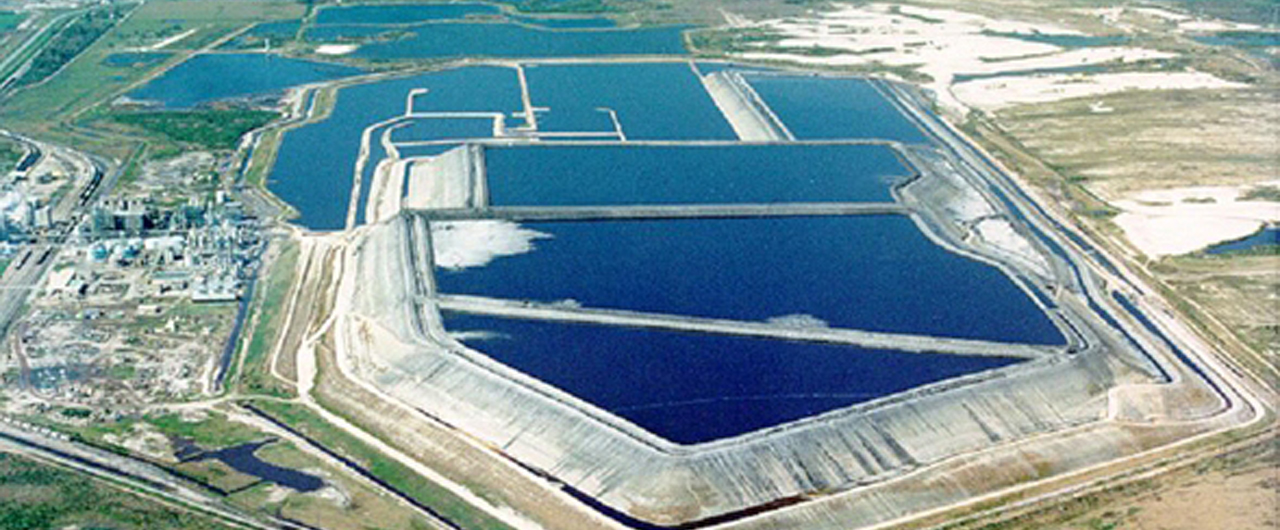This FIPR Institute research area concentrates on issues pertaining to the chemical processing of phosphate rock into fertilizer products – an industry that has grown dramatically during the past 60 years. Since opening in 1978, a key focus of the Institute has been on phosphogypsum, a by-product that is produced along with the industry’s fertilizer products. FIPR has funded research to understand phosphogypsum’s engineering properties; environmental impacts; and potential use as a roadbase material, a commercial sulfur source, an agricultural soil amendment, a construction material and a covering for landfills that would hasten decomposition and extend a landfill’s life.
Regulations require phosphogypsum to be stored in stacks adjacent to the fertilizer production facilities. There are also large quantities of acidic process water stored and circulated between the stack and the chemical plant. Institute research has attempted to minimize any associated environmental impact.
The Institute has continuously facilitated discussion among decision makers on the risks and benefits of putting phosphogypsum to use rather than having it remain in stacks. FIPR routinely provides scientific input and data to the ongoing technical dialogue with the U.S. EPA to resolve issues associated with the agency’s current rules requiring phosphogypsum to be stacked.
Examples of other issues that have been investigated in this area are: controlling dust connected to fertilizer processing and transportation; minimizing the impact of magnesium on the processing of rock being mined in the southern part of the phosphate district where there is a high concentration of dolomite; finding more efficient and environmentally friendly ways to transport materials; developing process controls and techniques that reduce the amount of phosphogypsum generated, and increasing the quality of phosphoric acid produced.
